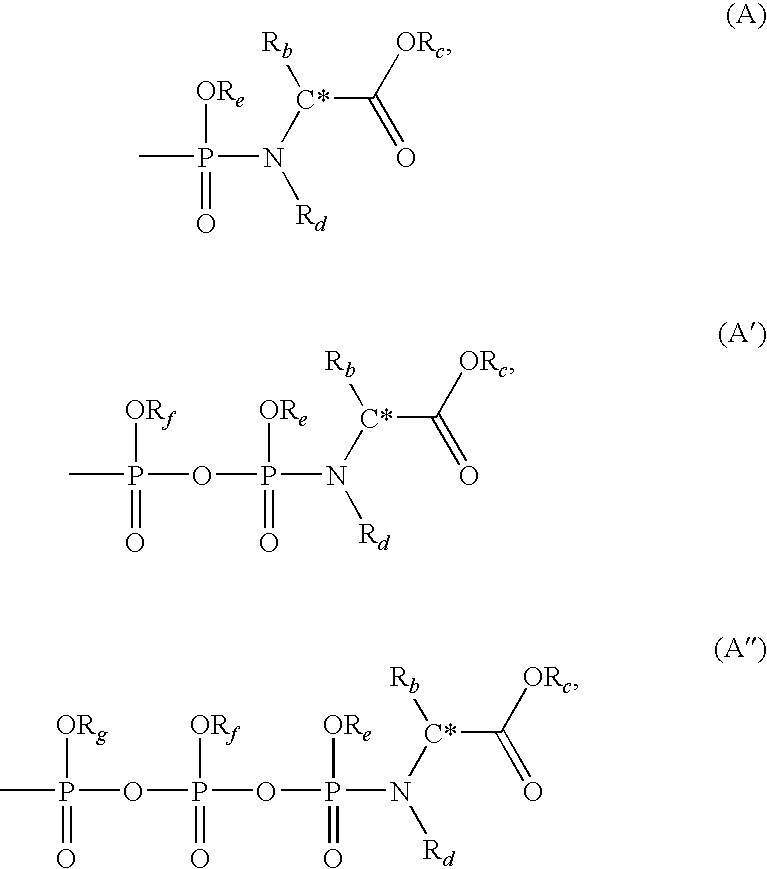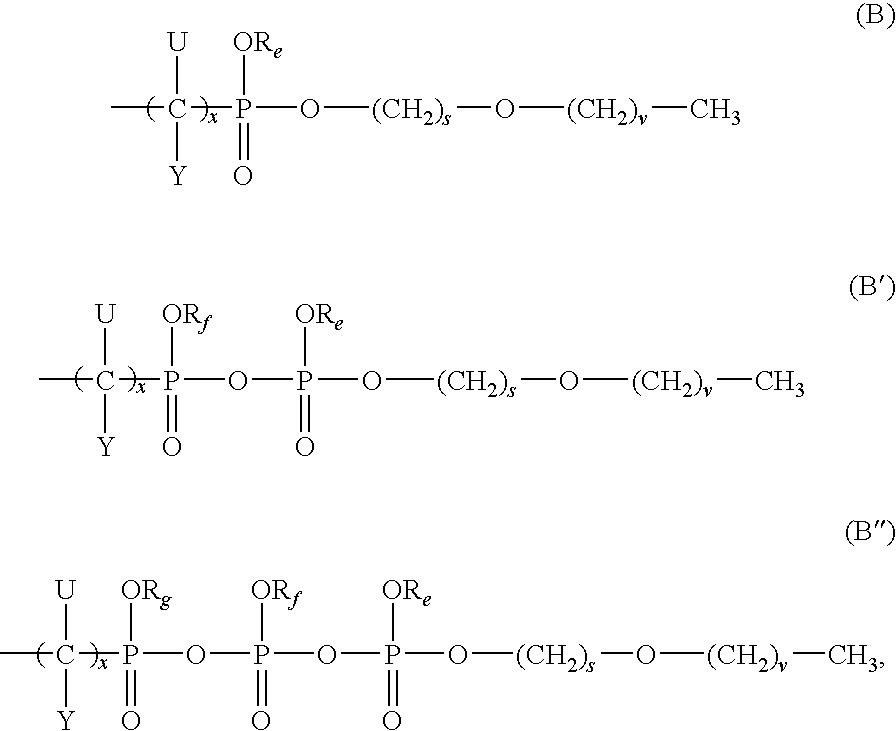Compounds, compositions and methods for treating viral infection
a technology of compound and viral infection, applied in the field of nucleoside compounds, derivatives and analogues, can solve the problems of complex structure, complex structure, and inability to meet the needs of multiple agents, and achieve the effect of reducing the number of agents, and improving the quality of li
- Summary
- Abstract
- Description
- Claims
- Application Information
AI Technical Summary
Problems solved by technology
Method used
Image
Examples
example 1
Preparation of (2R,3R)-2-(4-amino-5-cyano-7H-pyrrolo[2,3-d]pyrimidin-7-yl)-5-(benzoyloxymethyl)-3-methyltetrahydrofuran-3,4-diyl dibenzoate, 1
[0305]
Step 1: Preparation of (2R,3R)-2-(4-amino-6-bromo-5-cyano-7H-pyrrolo[2,3-d]pyrimidin-7-yl)-5-(benzoyloxymethyl)-3-methyltetrahydrofuran-3,4-diyl dibenzoate, C
[0306]To a suspension of 4-amino-6-bromo-7H-pyrrolo[2,3-d]pyrimidine-5-carbonitrile, A (4.1 g, 0.017 mol) in acetonitrile (120 mL) at room temperature was added via syringe BSA (6.9 g, 0.034 mol) over a 20 min. period. The mixture was stirred at room temperature for 30 min. after which (2S,3R,4R,5R)-5-(benzoyloxymethyl)-3-methyltetrahydrofuran-2,3,4-triyl tribenzoate, B (10.0 g, 0.17 mol) was added in one portion followed by addition via syringe of TMS-OTf (11.3 g, 0.051 mol) over a 15 min. period. The mixture was stirred at room temperature for 15 min. and then heated to 65° C. for 17 hr. The reaction mixture was diluted with ethyl acetate (120 mL) and the mixture was poured into s...
example 2
Preparation of (2R,3R)-2-(4-amino-5-cyano-7H-pyrrolo[2,3-d]pyrimidin-7-yl)-5-(isobutyryloxymethyl)-3-methyltetrahydrofuran-3,4-diyl bis(2-methylpropanoate), 2
[0308]
Step 1: Preparation of (2R,3R)-2-(4-amino-6-bromo-5-cyano-7H-pyrrolo[2,3-d]pyrimidin-7-yl)-5-(benzoyloxymethyl)-3-methyltetrahydrofuran-3,4-diyl dibenzoate, C
[0309]To a suspension of 4-amino-6-bromo-7H-pyrrolo[2,3-d]pyrimidine-5-carbonitrile, A (5.3 g, 22.0 mmol), (2R,3R,4R)-5-(benzoyloxymethyl)-3-methyltetrahydrofuran-2,3,4-triyl tri benzoate, B (12.8 g, 22.0 mmol) in anhydrous acetonitrile (200 ml) was added DBU (10 ml, 66.0 mmol). The mixture was cooled to 0° C. and TMSOTf (15.9 ml, 88.0 mmol) was added dropwise. The mixture was stirred at room temp for 15 min and then heated at 65° C. for 2 h. The mixture was cooled to room temperature, a saturated aqueous NaHCO3 solution (200 ml) was added and the reaction mixture was extracted with EtOAc (2×150 ml). The organics were dried over Na2SO4 and concentrated to give orange...
example 3
Preparation of (4R,5R)-2-(acetoxymethyl)-5-(4-chloro-5-cyano-7H-pyrrolo[2,3-d]pyrimidin-7-yl)tetrahydrofuran-3,4-diyl diacetate, 3
[0313]
Step 1: Preparation of (4R,5R)-2-(acetoxymethyl)-5-(5-cyano-4-hydroxy-7H-pyrrolo[2,3-d]pyrimidin-7-yl)tetrahydrofuran-3,4-diyl diacetate, G
[0314]To a solution of (4R,5R)-2-(acetoxymethyl)-5-(4-amino-5-cyano-7H-pyrrolo[2,3-d]pyrimidin-7-yl) tetrahydrofuran-3,4-diyl diacetate, F (2.5 g, 5.99 mmol) in AcOH (45 ml) and H2O (15 ml) was added NaNO2 (4.13 g, 59.88 mmol, 10 equiv.) in one portion. The resulting mixture was heated at 55° C. (oil bath temperature) for 6 h. The reaction mixture was cooled to ambient temperature and the solvents were removed under reduced pressure. The residue obtained was dissolved in EtOAc (50 ml) and washed with water and aqueous NaHCO3 solution. The organic layer was separated, dried over Na2SO4, filtered and concentrated under vacuum to give crude compound G. The crude product G obtained was carried forward to next step wi...
PUM
 Login to View More
Login to View More Abstract
Description
Claims
Application Information
 Login to View More
Login to View More - R&D
- Intellectual Property
- Life Sciences
- Materials
- Tech Scout
- Unparalleled Data Quality
- Higher Quality Content
- 60% Fewer Hallucinations
Browse by: Latest US Patents, China's latest patents, Technical Efficacy Thesaurus, Application Domain, Technology Topic, Popular Technical Reports.
© 2025 PatSnap. All rights reserved.Legal|Privacy policy|Modern Slavery Act Transparency Statement|Sitemap|About US| Contact US: help@patsnap.com



